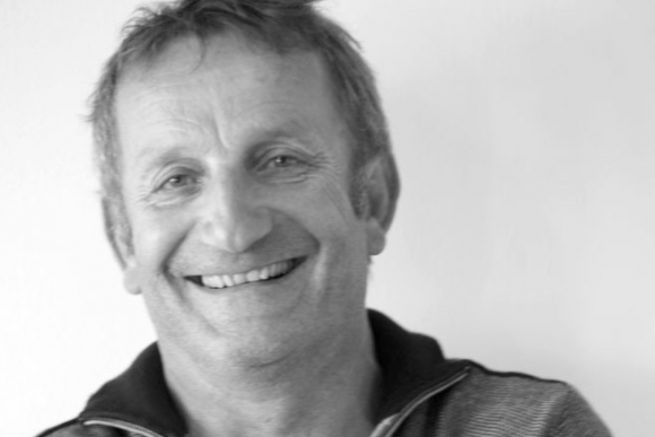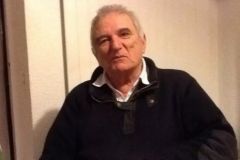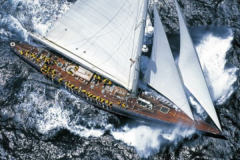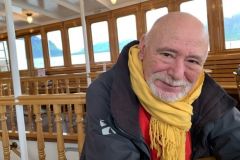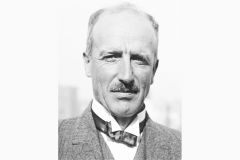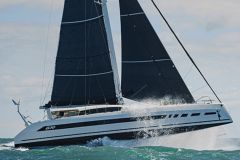The birth of VPLP
"It's a family heirloom. My grandparents and parents used to do a lot of boating. I started boating at a fairly young age. Pretty Parisian, we used to sail on holidays."
After graduating from high school, Vincent Lauriot-Prévost decided to study naval architecture. He joined the Southampton School in England. It was then that he met Marc Van Peteghem, with whom he became friends.
"We started rooming together and went to school together a little bit. The last year was cut short because we didn't graduate. I was hired in a shipyard and he was hired by a naval architect. Instead of spending the last six months in school, we spent the last six months in the field."
The two men lost touch for a few years. Four years later - it was 1983, in Marseille - Marc called on Vincent to draw the plans for a boat. This is how VPLP was born and how the firm's naval architecture activity started.
"We started our business by designing this first boat. We liked this approach to the business. We had started a business, but we had to keep it going."
Their first boat is a 15m trimaran for a single-handed transatlantic race. Then, some Spaniards entrusted them with the design of a 14 m catamaran to do the Discovery Route. Olivier de Kersauson will also entrust them with the design plans for his trimaran Poulain.
Four years later, the two men tackle their first cruise ship. A 16 m catamaran for the Lagoon shipyard. A second and a third boat followed... This was how a series was born, then other models of different sizes followed to finally become a range.
Although at the start, the two architects thought they could work on several areas at the same time - racing and cruising - it turned out that the situation had changed rapidly.
"The pact we had in the beginning was that of sweet dreamers. We thought we were interchangeable, alternating between sailing and racing, sailing for personal use while the other continued to work. But little by little, we became more professional and we had to change. I moved to Vannes to manage the racing activity and Marc to Paris for the yachting, yachting and series markets, to be in contact with owners and manufacturers. Our paths have allowed us to specialise."
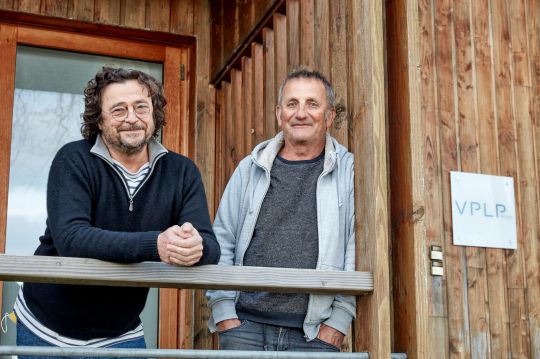
The work of an architect
To work, the firm follows two directions. They are directly contacted by the building sites or teams or they are the ones who go to meet possible clients.
"We are present at certain trade shows to present concepts. It's a proactive approach, but for the most part, we respond to the specifications of construction sites and customers."
Depending on the requests, they are more or less a proposal force. While some clients have clear-cut ideas about their desires and needs, others are open to new solutions. For the cruising part, the shipyards have very precise specifications, formulated by dealers or customers. Other shipyards are more attentive to the needs of their customers, and are keen to innovate and follow trends.
"When you talk to yacht owners, some know what they want, while others tell you about a spirit. We exchange, we propose, we get reactions that lead to an evolution of the proposals."
For the racing world, it's a little different.
"They come to us to make a winning boat. That's what's difficult when you haven't proven yourself, having the confidence of someone who's going to tell himself that by working together we're going to win races. Confidence is important. If you start to establish a relationship with a team, as was the case with Banque Populaire, Groupama or Macif, you end up creating several boats.
After the design of the first boat, the thinking is done internally, with the clients, with the teams. The 2nd e boat is more directional. We have to be proactive and innovative, but we have to listen, interpret the requests and transform them into plans and make the necessary studies to make decisions on the choices, etc."
So if there are no real models, the trap to avoid in the racing world is to fall asleep on its achievements, not to succeed in renewing itself.
"If we're not in progress, we tend to regress. We can have this feeling of being on the edge, between what we have done, the development of tools, feedback, critical analysis of what we have done, observation of other facts. But in the end, it's a passion, it's not a big deal."
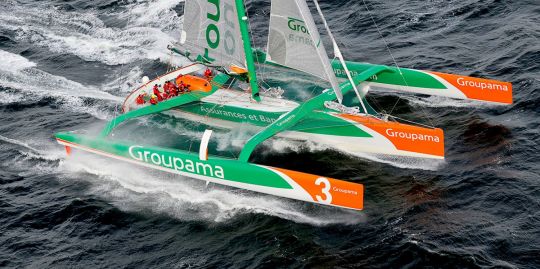
A job of passion that makes you vibrate
"There's a lot of things that thrill me. Being in touch with people. A person who thinks about a boat, it generates exchanges that are strong.
When you work with sailors who are competing at a high level, they always have strong and clear-cut characters. It's nice to work with people with strong personalities.
When you work with clients who are more into personal life projects, being able to help them achieve those things and get into their dreams is exciting. When you work with an industrialist on a production boat, you're not trying to solve a speed equation, but rather how to design the best boat to meet the demand in good intelligence.
When you work with 10 people, being able to achieve great things as a team is great.
It's pretty big. There is a motivation that exists as well. There's an exhilarating side to a boat that starts a race, achieves its goals and wins."
Defining tomorrow's trends
"Defining tomorrow's trends is the visionary side of the architect. Equipping a racing boat with a rigid wing for performance makes you wonder if it can have other applications, for example."
Thus, the rigid wing of the BMW Oracle trimaran designed by VPLP in 2010 led them to find a new trend to equip maritime transport with these wings.
"The principle is the same except that in this case, we're looking for a reduction in consumption."
"In the same way, we make hydrofoil boats to win races. To what extent could we design consumer hydrofoil boats to win in confort??
The cross-cutting nature of running, cruising and shipping is a very important aspect that can be exploited, because we have both a foot in the race and in the general public use. This transversality of the two worlds is exciting.
